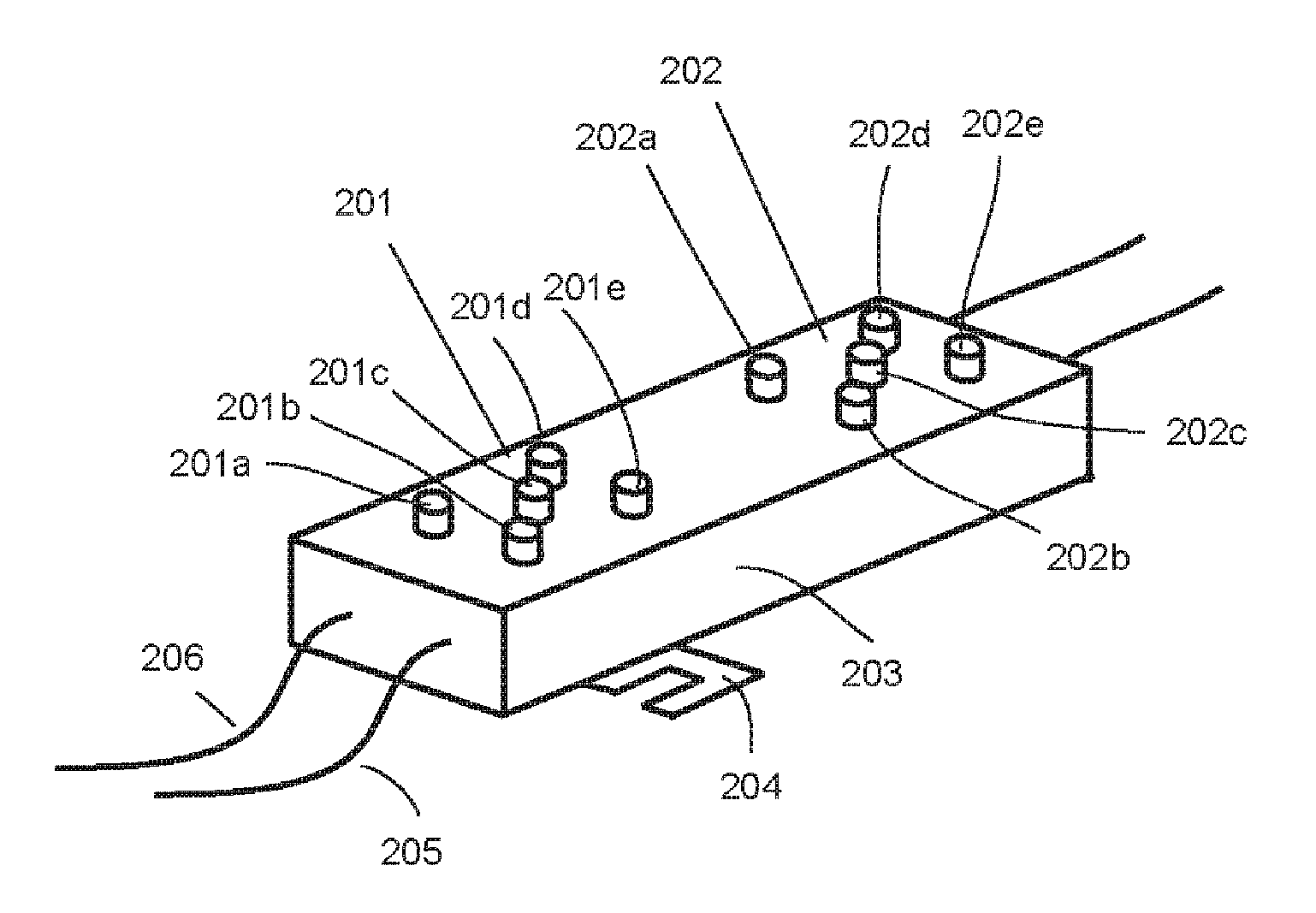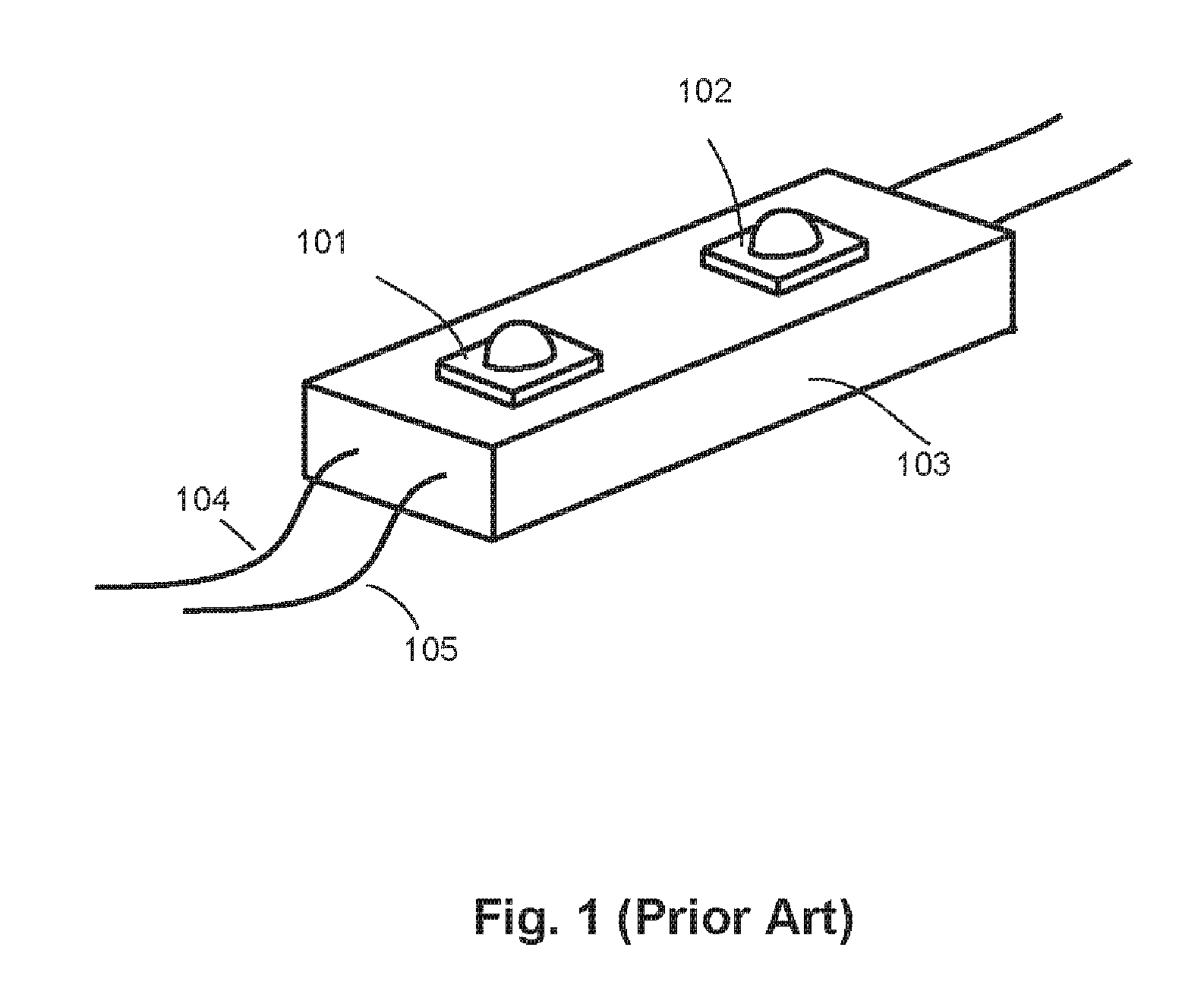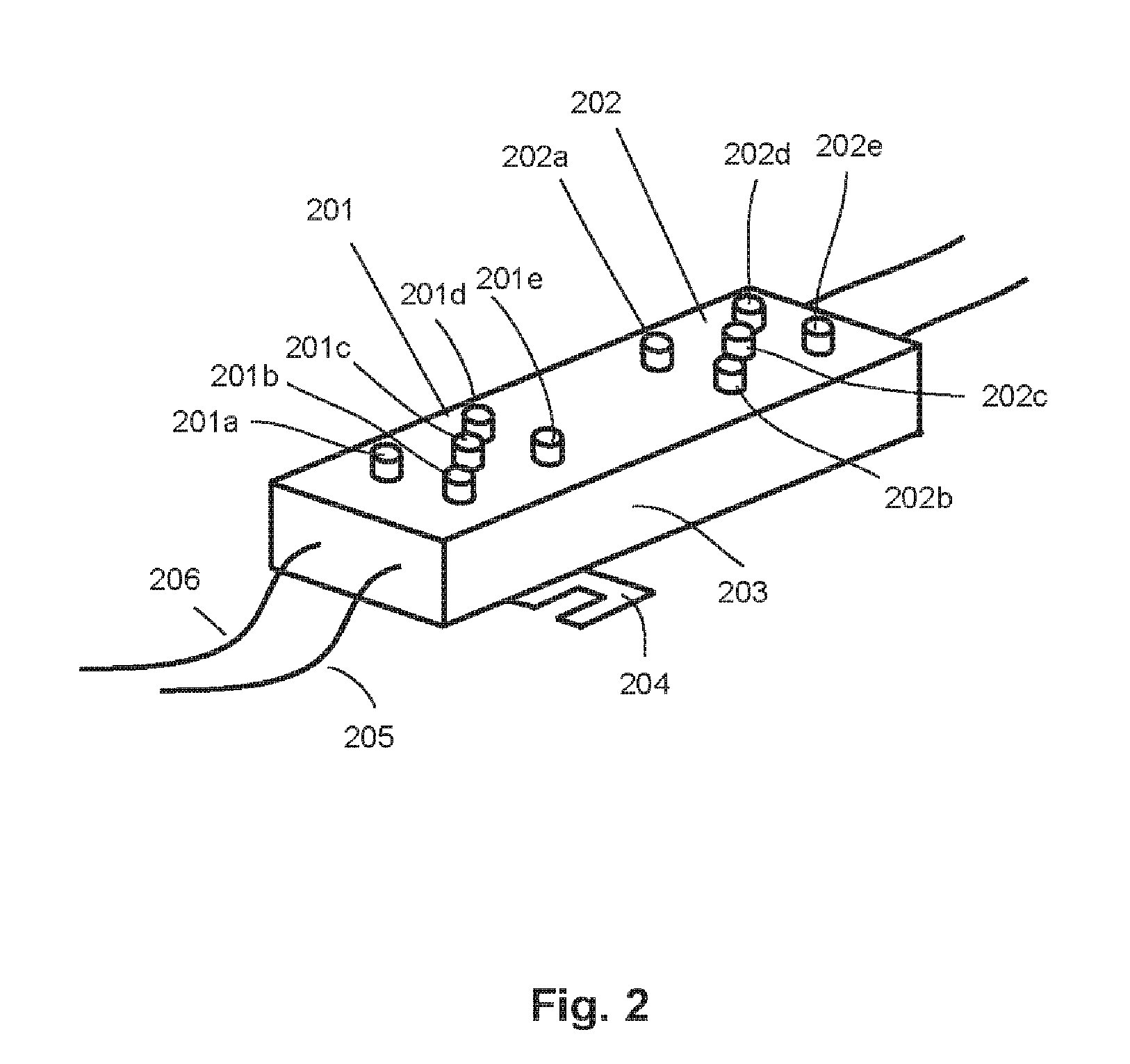Pixilated LED Light Source for Channel Letter Illumination
a led light source and channel letter technology, applied in the direction of light source combinations, identification means, instruments, etc., can solve the problems of affecting intensity, lessening led life, and not allowing efficient heat dissipation of channel letters, so as to reduce energy consumption and heat generation.
- Summary
- Abstract
- Description
- Claims
- Application Information
AI Technical Summary
Benefits of technology
Problems solved by technology
Method used
Image
Examples
Embodiment Construction
[0013]With reference now to the drawings, the preferred embodiment of the pixilated LED lighting module is herein described. It should be noted that the articles “a”, “an” and “the”, as used in this specification, include plural referents unless the content clearly dictates otherwise.
[0014]FIG. 1 depicts prior art, using piranha LEDs as light source for channel letter illumination. This format, using such large surface mounted LEDs 101, 102 as a light source, is widely used in the market. LEDs 101 and 102 in this example are piranha LEDs mounted on the upper surface of module 103. Most of the module 103 is metal to dissipate the heat generated by piranha LEDs 101 and 102. A plurality of modules 103 are electrically connected by wires 104, 105 and mounted in a channel letter for signage illumination. The disadvantage of this light source is that the both the intensity of emitted light and the covering angle are limited. Another issue is that a high input current has to be used with p...
PUM
 Login to View More
Login to View More Abstract
Description
Claims
Application Information
 Login to View More
Login to View More - R&D
- Intellectual Property
- Life Sciences
- Materials
- Tech Scout
- Unparalleled Data Quality
- Higher Quality Content
- 60% Fewer Hallucinations
Browse by: Latest US Patents, China's latest patents, Technical Efficacy Thesaurus, Application Domain, Technology Topic, Popular Technical Reports.
© 2025 PatSnap. All rights reserved.Legal|Privacy policy|Modern Slavery Act Transparency Statement|Sitemap|About US| Contact US: help@patsnap.com



